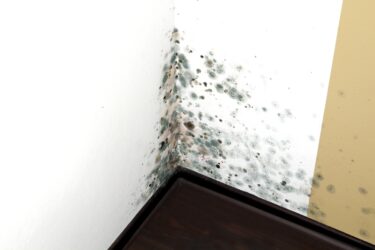6 Ways to Prevent Mold in Your Basement

Why is mold dangerous, and how can you prevent mold in your basement and home?
The Dangers of Mold
While not everyone is allergic to mold itself, mold triggers allergic symptoms in a large percentage of individuals. You may notice that during damp and rainy seasons, you are more susceptible to sneezing, coughing, watery and itchy eyes, and a runny nose. This is because excessive moisture can increase the amount of mold in your home, and mold produces mycotoxins that can negatively affect your health. Mold is harmful for the following reasons.
1. It colonizes.
Mold reproduces by developing and spreading mold spores. The mold spores then travel through the air and begin growing in new spots nearby.
2. It reduces indoor air quality.
Since mold spores can essentially fly, they lower your home’s indoor air quality. In turn, poor indoor air quality poses a threat to your health.
3. It poses a long-term health risk.
Not only does mold cause mild to severe allergic symptoms, but it can also cause long-term lung conditions in some people. Respiratory infections, asthma triggers, and COPD are all possibilities in homes with excessive mold.
4. It never really goes away until dealt with.
Mold is tough. Until you locate the source of the problem, you probably won’t eliminate it entirely. Usually, it is best to contact a professional in the mold industry.
5. It destroys buildings.
Mold is bad for your health, but it is also bad for your home. Excess moisture softens the walls and ceilings until they can collapse, compromising a building’s structural integrity.
How Can You Prevent Mold in Your Basement?
Mold can colonize anywhere within a home, but it is particularly common in basements. Basements generally provide the dark, damp, and cool atmosphere that mold requires to thrive.
Fortunately, you can take preventive measures against mold in your basement. We suggest you apply the following tips to protect your health and comfort.
1. Make sure the ground outside slopes away from your house.
A gradual slope away from your home is necessary to prevent water from pooling around your home’s foundation. Not only can standing water cause your home’s foundation to crumble, it encourages mold growth in hidden, dark areas.
2. Check the sump pump regularly.
If your home’s foundation is located underneath a water table, the sump pump’s job is to pump excess water into a nearby drainage system. Sometimes, sump pumps clog or fail, in which case your basement can flood. To prevent the sump pump from failing, inspect it regularly.
3. Select flooring with mold in mind.
Generally speaking, carpet is not the best flooring choice for basement finishing. One flood can destroy your flooring and give room for mold to develop. Once mold begins developing inside or underneath carpet, it can be extremely difficult to remove.
If carpet is necessary to your basement’s purpose, make sure you clean it often, and dry it thoroughly if it ever gets wet.
4. Keep your basement ventilated.
To prevent moisture from lingering in the air, run a fan or two when you can. Additionally, avoid cluttered areas where mold can go to hide. One of the best ways to prevent mold in a basement is to keep the area tidy and ventilated at all times.
5. Insulate basement walls, ceilings, and pipes.
Today, most contractors insulate homes when they build them. However, many older homes were never insulated and consequently develop mold through the damp air that enters. Adding insulation can help deter mold growth.
6. Invest in a dehumidifier.
Like a fan, a dehumidifier helps rid basement air of excess moisture, preventing mold from colonizing in the walls and ceilings.
How Can Sheffield Homes Help?
Sorry, we won’t clean out your refrigerator, but we will help assess possible causes of mold and check for trouble spots in your basement. We’ll walk you through the process of prepping your basement for a finish, and help you decide what works best in your space. At Sheffield Homes, we have more than 40 years of experience to help guide you through the home-building and remodel process. Call us today at (303) 420-0056 to start planning your basement finish in the Denver metro area or in northern Colorado!

